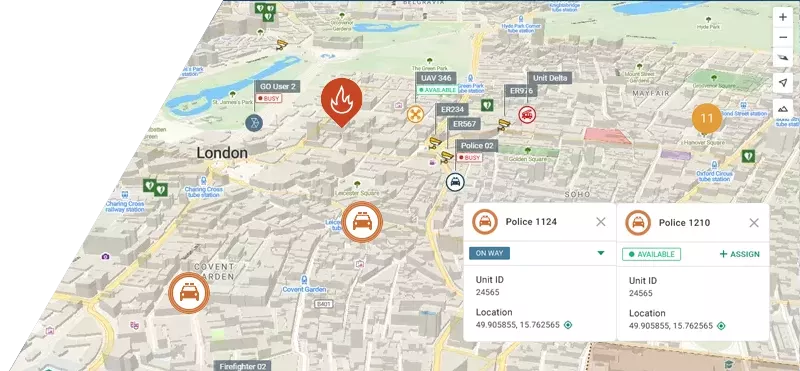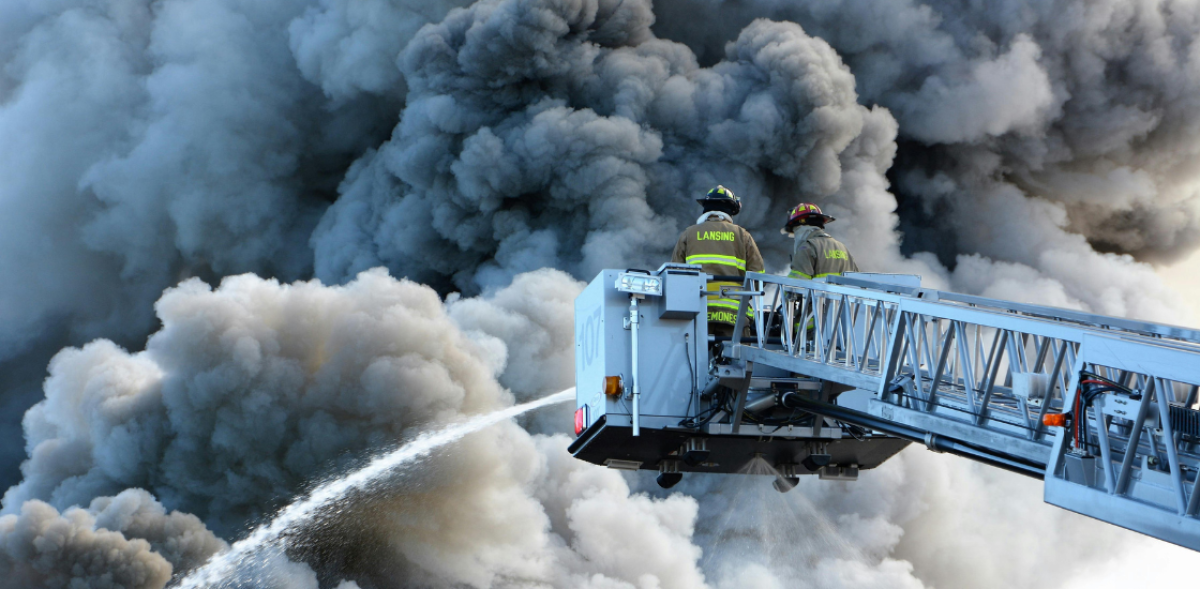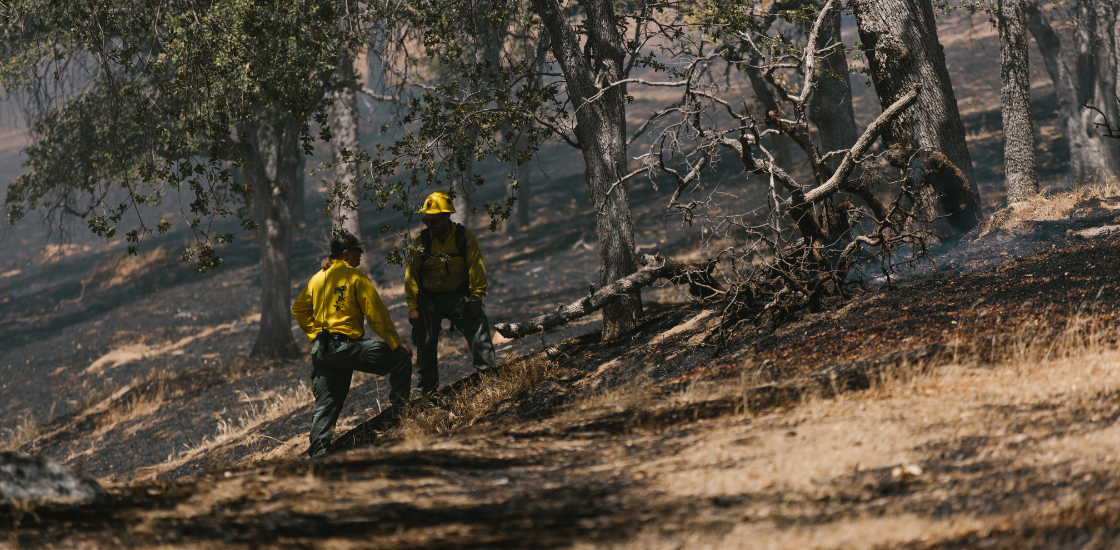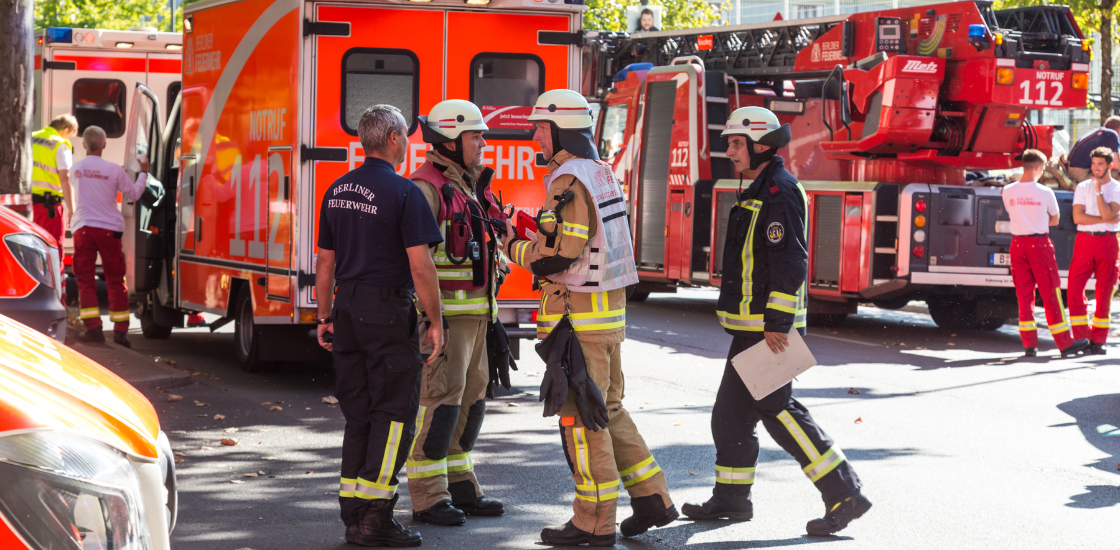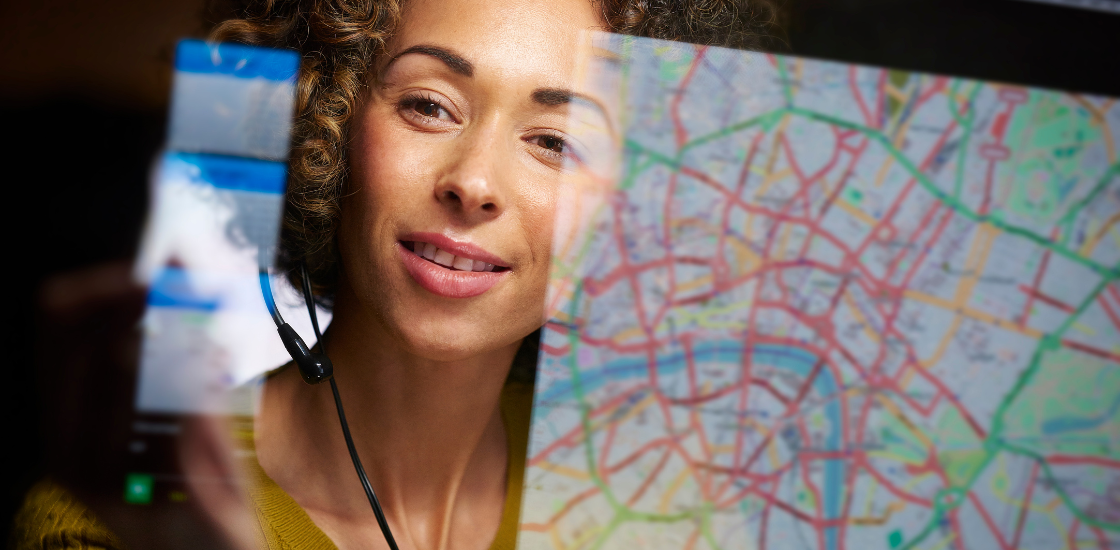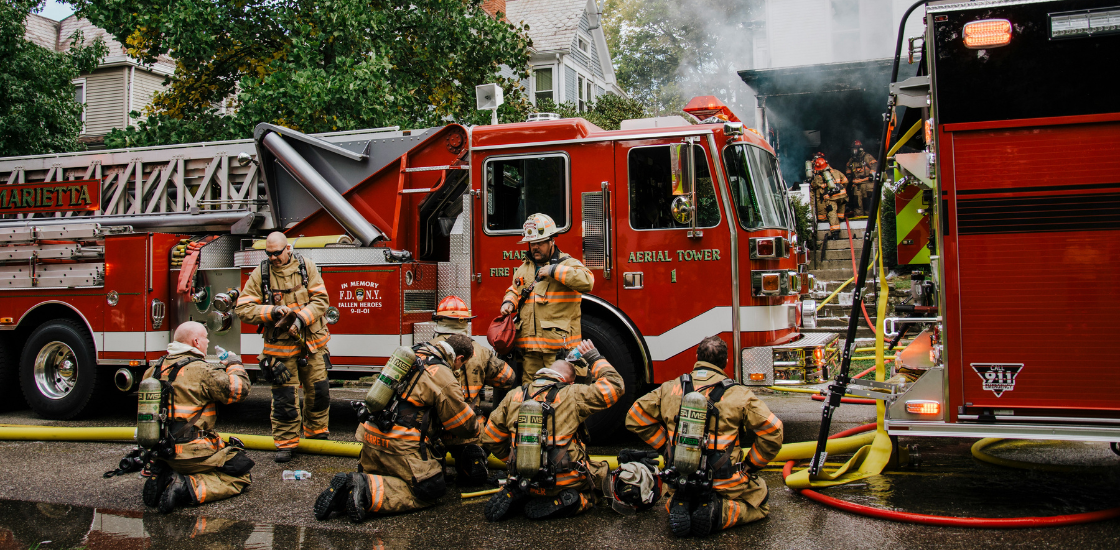Table of Contents
Call takers are the first point of contact for people in distress. Their ability to make split-second decisions can make the difference between successful and unsuccessful responses.
In the following article, we explore what emergency call handling is, how modern emergency call handling software helps optimize the process, and what the best practices are for greater effectiveness.
What is Emergency Call Handling?
Emergency call handling involves answering 911 distress calls, gathering and logging critical incident details, assessing the situation, and dispatching emergency services such as police, fire, or medical responders.
Well-optimized call taking is essential for public safety agencies, minimizing delays and ensuring an effective response to various types of incidents. This process is often supported by emergency call handling software, which streamlines the work of call takers through workflows and automation.
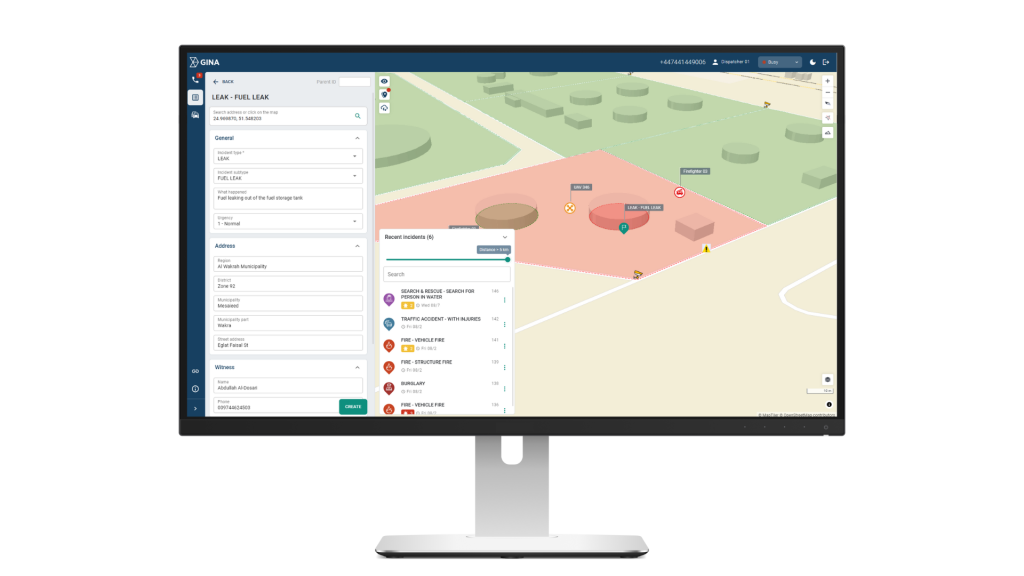
Fig 1: Incident creation in the user interface of emergency call handling software (Smart CAD by GINA).
How are 911 calls handled? Effective emergency call handling involves the following tasks:
- Call reception: A 911 call taker answers and identifies the emergency.
- Information entry: Key details, such as location, emergency type, and risks, are logged into the system in order to be easily accessible by first
- Assessment & dispatch: The call taker prioritizes the call and sends the right responders.
- Data access for responders: Emergency units receive real-time updates from the system.
- Pre-Arrival Instructions: If needed, the call taker provides life-saving guidance.
What is the difference between a 911 dispatcher and a call taker?
The roles of call takers and dispatchers might overlap. It depends on the size of the agency and the scope of the incident. In smaller agencies or during less critical events, one person can typically handle both roles.
However, it is more often that in emergency agencies there are designated call takers who focus solely on answering emergency calls, while dispatchers manage the coordination of emergency units.
The key differences between 911 dispatcher and call taker lies in the scope of responsibility.
Call takers are the first point of contact in an emergency, responsible for gathering critical information from 911 callers, assessing the situation, and entering the details into the system. Their role ends once emergency responders are dispatched.
Call takers face several challenges during their daily routine, such as:
- High volumes of calls and handling multiple emergencies.
- Dealing with distressed or uncooperative callers.
- Addressing language barriers and technological limitations.
- The emotional toll of 911 call taking.
Dispatchers, on the other hand, are in touch with field crews. They remain engaged with the incident, coordinating response efforts, adjusting resources as needed, and providing real-time updates to fire, ems, law enforcement and other field units.
For example, during a fire incident, dispatchers must manage multiple responding units, while in law enforcement incidents, they may be responsible for running background checks or updating officers on developing situations.
While the jobs are different, both roles are essential in keeping the system running and ensuring the fastest possible emergency response.
Key Features of Emergency Call Handling Software
Call handling software is essential for the effectiveness of emergency response agencies, ensuring that no matter what crisis unfolds, help is always on the way.
While some basic call-handling solutions exist independently, emergency call handling software is typically a component of CAD (Computer-Aided Dispatch) software, such as GINA’s Smart CAD. Most modern CAD solutions integrate emergency call handling into their workflows to ensure seamless transitions from call reception to dispatch.
For an in-depth look at CAD software vendors, visit our blog on CAD Software Companies.
Such software streamlines the call handling process with automated data entry, mapping, and instant access to response teams. These and many other features help call takers make faster and more informed decisions, adding to a swift and coordinated response.
911 call taking and dispatching systems provide operators with features supporting incidents:
- Event queue
The event queue logs pending calls, SOS alerts, and sensor notifications, enabling call takers to assess, prioritize, and act swiftly. Call takers can dismiss false alarms or escalate incidents to dispatchers, ensuring a fast and organized emergency response.
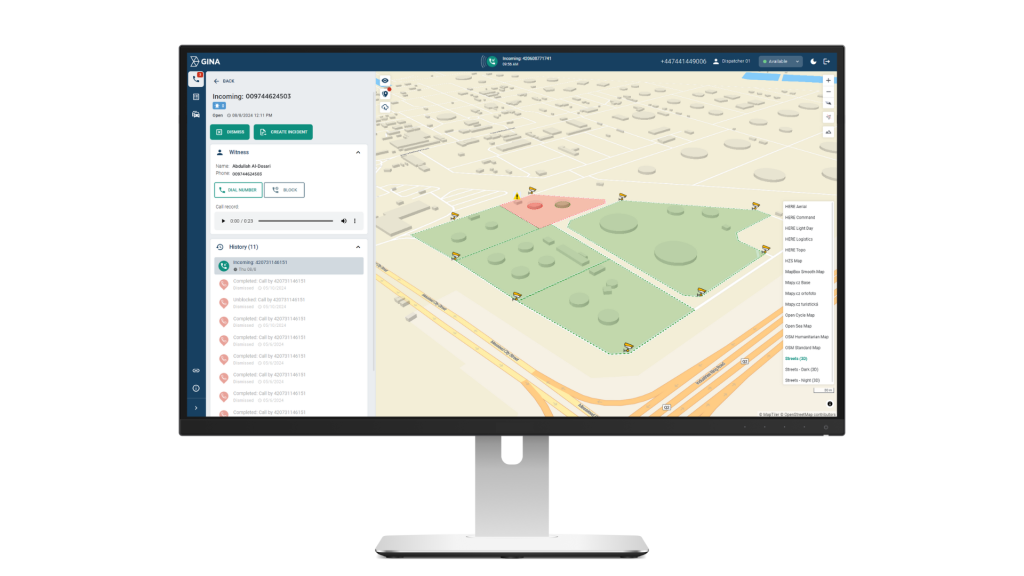
Fig 2: An example of call taking user interface (GINA Smart CAD).
- Call taking
A well-designed CAD (Computer-aided dispatch) system ensures incoming calls are routed seamlessly and displayed in a clear, user-friendly interface. This allows call takers to focus on assessing the emergency without delays or distractions, ensuring rapid response coordination.

Fig 3: Call handling user interface of the GINA’s Smart CAD system. Incoming calls are displayed at the top of the screen where the operator can easily answer them.
- Telephony integration
911 call handling systems integrate with ALI (Automatic Location Identification) and ANI (Automatic Number Identification) databases to streamline caller identification, making call handling faster and more efficient.
Advanced systems, such as GINA, further improve efficiency by receiving data from sensors and video management systems, allowing call takers to focus on incident response rather than manual data entry.
- Case management tools
Emergencies evolve quickly, and case management tools allow call takers and dispatchers to update, edit, and track incidents in real time. This ensures that first responders have access to the most accurate and up-to-date information throughout an incident.
- Efficient call distribution
A smart 911 call handling system maintains real-time logs of call taker and dispatcher availability, ensuring efficient call distribution. By balancing workloads, these systems help prevent operator fatigue and improve overall response efficiency.
- Call records
Call records store essential details, allowing users to replay calls, follow up with witnesses, or initiate new incidents based on call details. This feature enhances incident documentation, accountability, and investigative processes.
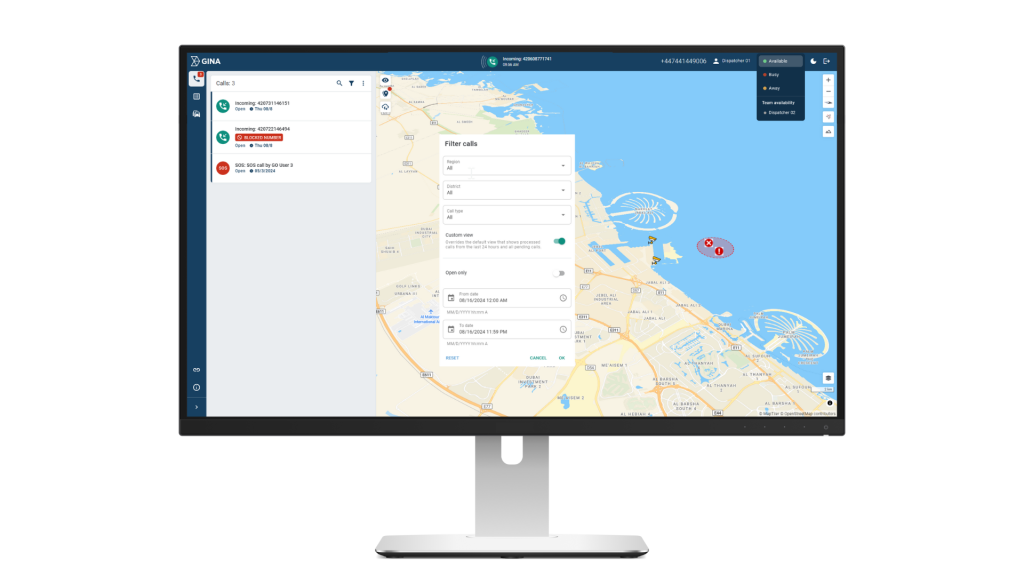
Fig 4: Emergency call handling software stores call logs so the operator can easily return to them.
- Call logs
Abuse of 911 services can waste valuable resources. Call logs track repeated calls from the same number, helping agencies identify misuse, flag nuisance callers, and take appropriate action to keep emergency lines available for real crises.
An effective 911 call taking system optimizes emergency response by automating key processes, improving data accuracy, and ensuring seamless coordination between call takers, dispatchers, and emergency responders.
By integrating real-time data, automation, and intuitive user interfaces, these systems play a vital role in delivering faster, more reliable emergency assistance.
Best Practices for Optimizing Emergency Call Handling
Effective emergency call handling is crucial for timely and accurate responses to crises. To optimize this process, agencies should focus on the following best practices:
Utilize advanced call management software
Implementing a sophisticated CAD (Computer Aided Dispatch) system enhances the efficiency of emergency response teams. These systems provide features for call handling, quick assignment of responders, communication tools, logging, reporting and other, ensuring rapid and precise responses to emergencies.
We cover this topic in more detail in our expert blog about Computer Aided Dispatch.
Implement standardized response protocols
Establishing clear, standardized protocols ensures consistency in handling emergency situations. For example, The National Emergency Number Association (NENA) emphasizes that standardized call-processing procedures serve as a foundation for developing effective Standard Operating Procedures (SOPs), facilitating uniformity and reliability in emergency responses.
Conduct regular training and simulations for 911 call takers
Training and simulations are vital for maintaining the readiness of 911 call takers. These practices help personnel stay adept at managing a wide range of emergency scenarios, ensuring they can perform efficiently under pressure.
Provide mental health support for call takers
The high-stress nature and dealing with uncomfortable situations necessitates robust mental health support systems. Offering resources such as counseling and stress management programs helps dispatchers cope with the emotional demands of their roles, promoting their well-being and sustaining their capacity to perform effectively.
By integrating these best practices, emergency response agencies can enhance the effectiveness of their 911 call handling processes, leading to improved outcomes for individuals in crisis.
The Future of Emergency Call Handling Systems
In the high-stakes world of emergency response, every second matters. Modern emergency call handling software are transforming the way call takers manage incoming calls, ensuring faster response times and more accurate decision-making.
By integrating advanced emergency call center software with automated workflows, telephony integration, and real-time data access, agencies can enhance efficiency, reduce stress for call takers, and ultimately save more lives. As technology continues to evolve, the future of 911 software promises even greater advancements in AI-driven call routing, predictive analytics, and seamless coordination between emergency services.
Investing in the right emergency call handling solutions is not just about improving efficiency, it’s about building a safer and more responsive emergency network that communities can rely on when it matters most.
If you want to know more about how GINA Smart CAD enhances call taking and dispatch, take a product tour or book a personalized demo.
